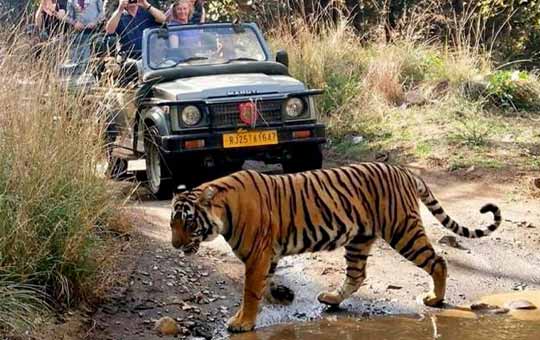Darrah Wildlife Sanctuary is located about 50 km from Kota, in southeastern Rajasthan. Spread across approximately 250 square kilometers, it lies within the rugged terrain of the Mukundra Hills, and is part of the Mukundra Hills Tiger Reserve today.
Historically, the sanctuary served as the royal hunting grounds for the Maharajas of Kota. It was declared a protected area in 1955, with the aim of conserving the rich flora and fauna of the region. In 2004, Darrah was merged with other forest areas—Jawahar Sagar and Chambal Wildlife Sanctuary—to create the Mukundra Hills National Park. In 2013, this national park was declared a tiger reserve, making Darrah a vital part of Rajasthan’s tiger conservation landscape.
Geography and Landscape
The sanctuary is characterized by hilly, dry deciduous forest terrain, interspersed with rivers and valleys. The Mukundra and Gagrola ranges pass through the sanctuary, creating narrow valleys and forested ridges. Important rivers like the Chambal, Ramzan, and Ahu flow through or near the area.
The dominant vegetation includes species such as dhok (Anogeissus pendula), babul, neem, khair, mahua, and flame of the forest (Butea monosperma).
Wildlife
Darrah supports a variety of wildlife. Common species include:
- Sloth bear
- Indian leopard
- Indian wolf
- Chinkara (Indian gazelle)
- Nilgai
- Sambar deer
- Wild boar
The birdlife is also diverse, especially in the winter months, with species like parakeets, treepies, woodpeckers, and several migratory waterbirds.
Visitor Information
- Best Time to Visit: October to March; summer sightings (March–May) are also good, though hotter.
- Closed During: Monsoon (July to mid-September)
- Timings: Usually 9 AM to 5 PM
- Entry Fee: Approximately ₹20 for Indian nationals, ₹100 for foreigners (subject to change)
- Permits: Required from the Forest Department or local authorities.
Conservation Importance
As part of the Mukundra Hills Tiger Reserve, Darrah plays a crucial role in biodiversity conservation, especially as a corridor for big cats. Though tiger reintroduction efforts have faced challenges, the area remains vital for species conservation in Rajasthan’s dry forest ecosystems.
